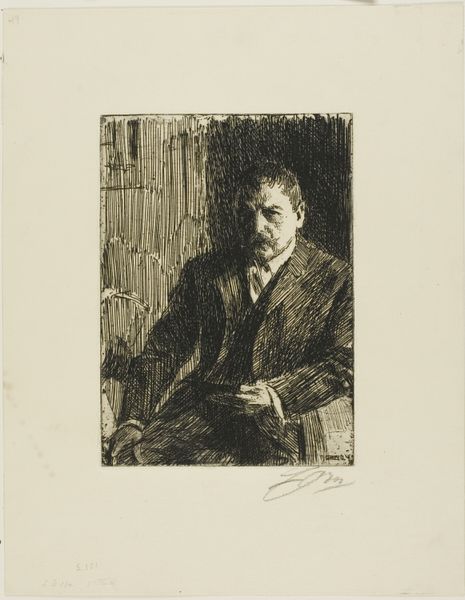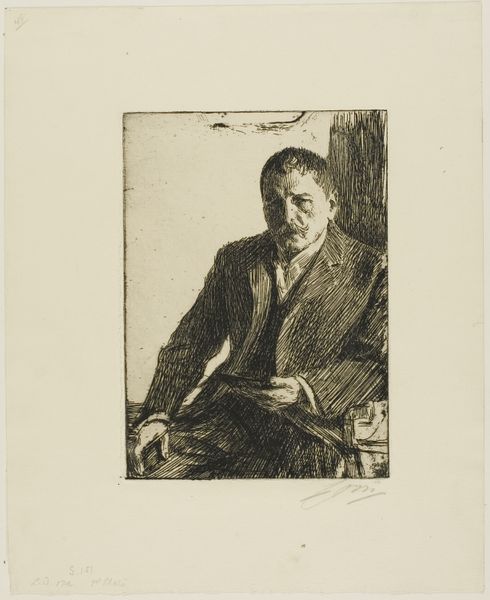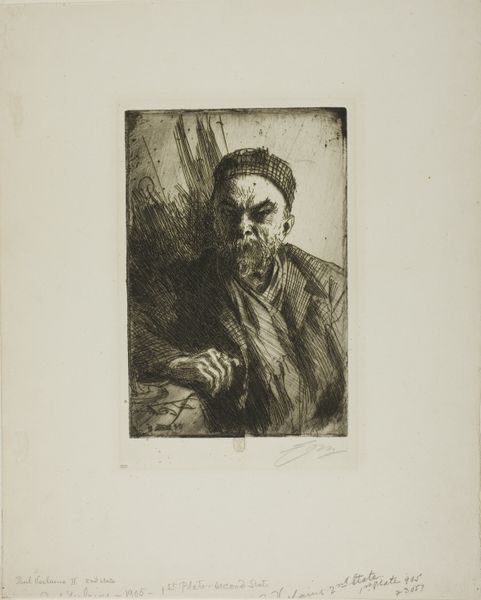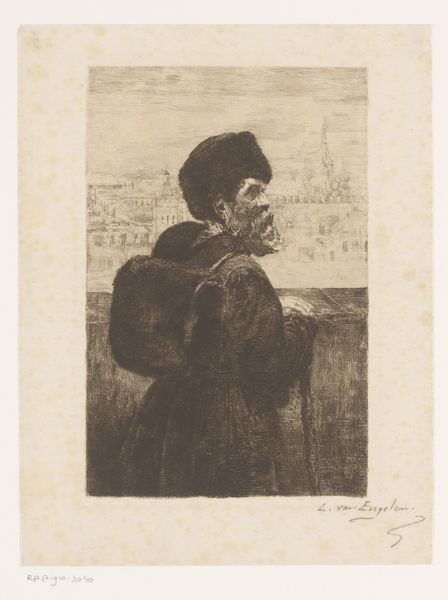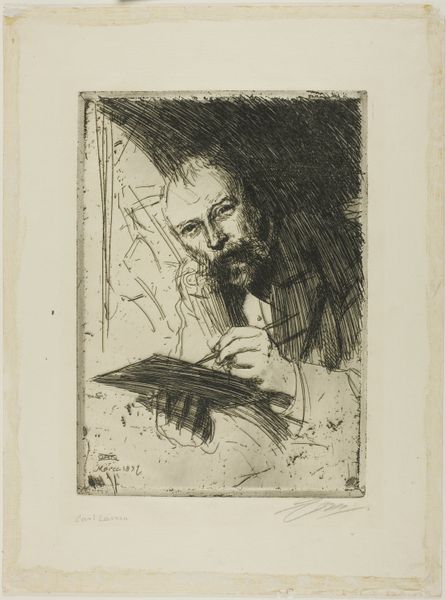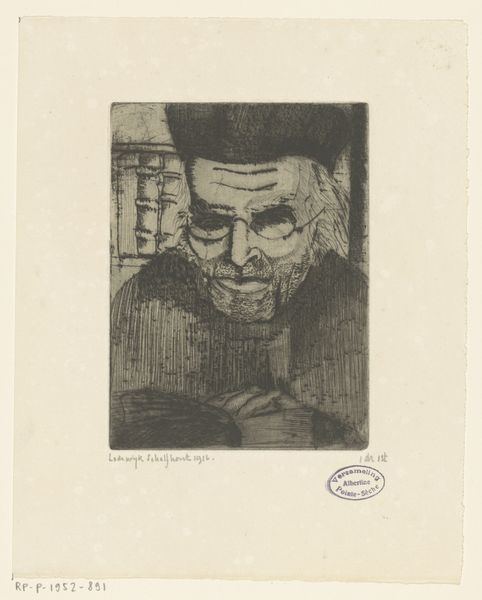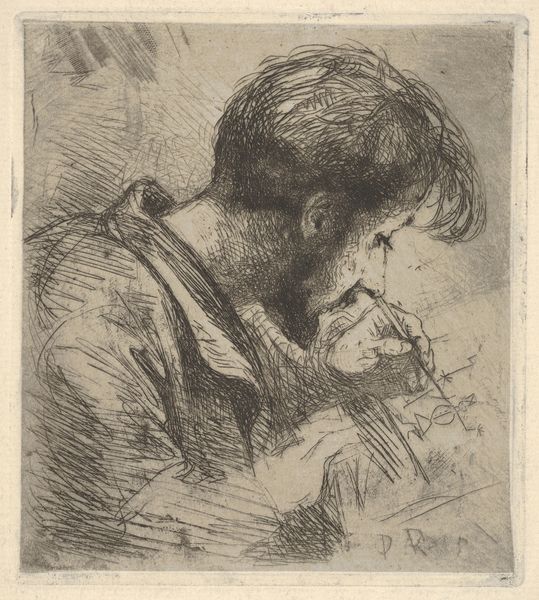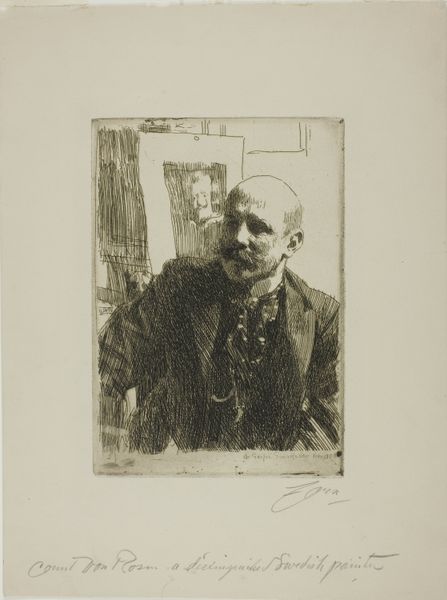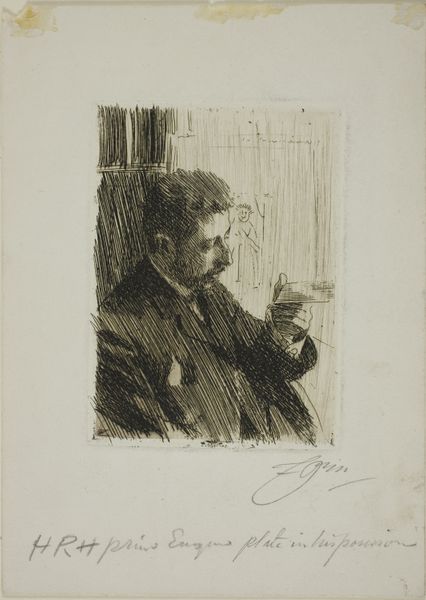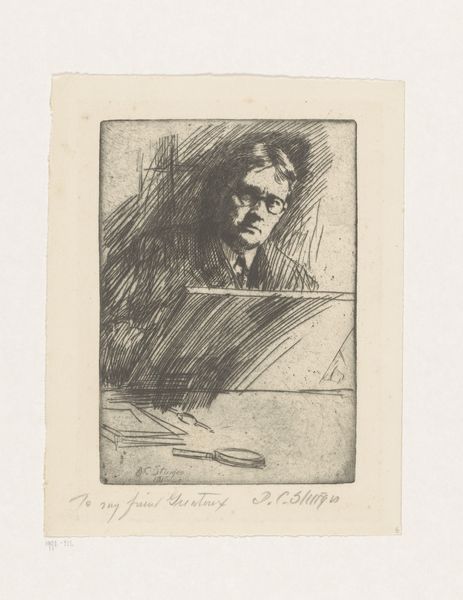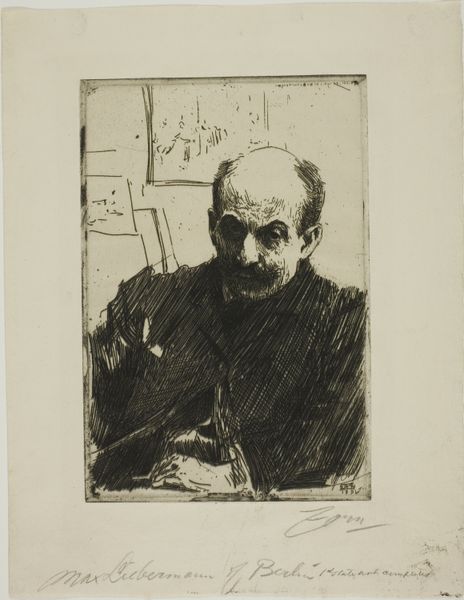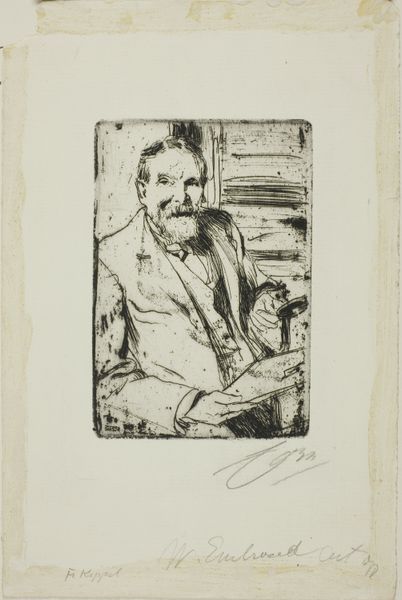
Dimensions: 200 × 151 mm (image/plate); 328 × 253 mm (sheet)
Copyright: Public Domain
Curator: I see a concentrated stare in this self-portrait; the artist seems caught in a moment of deep introspection, wouldn't you agree? Editor: He does, doesn’t he? I get the sense of an individual deeply embedded within a rapidly changing Swedish society at the turn of the century, trying to define his place in a moment of tremendous national upheaval and cultural renegotiation. Let me tell you about Anders Zorn's etching from 1905, "Albert Engström." Curator: Ah, Zorn, master of capturing the soul in strokes. It is interesting how his mark-making embodies some deeper sense of longing in Swedish visual traditions. What can you tell me about Zorn’s intention behind this work? Editor: Well, it depicts Albert Engström, a Swedish artist and author known for his satirical caricatures and his depictions of rural life. So in choosing his friend, it's important to recognize how Zorn sought to elevate his vision through portraits. By visually linking himself with Engström, Zorn's perpetuating cultural authority to satirize their social status. Curator: Definitely. We have two Swedish masters linked forever in this one work! The symbolism is thick in this artistic bond between etching marks that reveal two different personas with distinct styles that become as one. Tell me more about the choice of printing technique in relationship with its cultural identity. Editor: Right, the etching brings an intriguing blend of detailed lines with a softer impressionistic style—typical of Zorn's mature period—that elevates an appreciation for Swedish visual art, breaking from traditional methods by focusing not on detailed verisimilitude, but character. Curator: A lovely summary that highlights the piece's intimate balance. His gaze projects beyond his moment of artistic creation; the soulfulness Zorn conveys shows he wants his work to exist forever, as part of a lineage! Editor: Yes, you can definitely say the act of immortalizing Engström connects him not just to Swedish contemporary social issues but also challenges future viewers to investigate the evolving dialogue between artists across time, geography, and gender. It really does challenge what is a portrait? Who gets portrayed? Curator: Exactly. Well, thinking about art-historical conversations today, I feel the artwork transcends the artist-subject relationship, to spark discourse regarding cultural values! Editor: It sure does. Let’s hope viewers carry this new set of lens into the next exhibition.
Comments
No comments
Be the first to comment and join the conversation on the ultimate creative platform.
